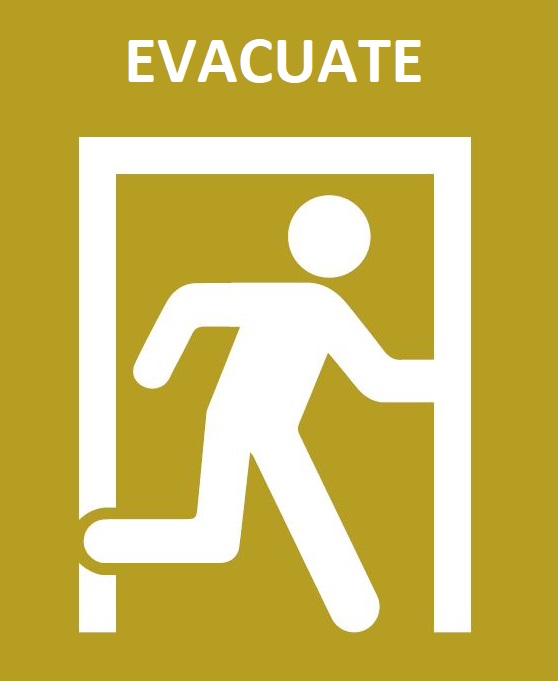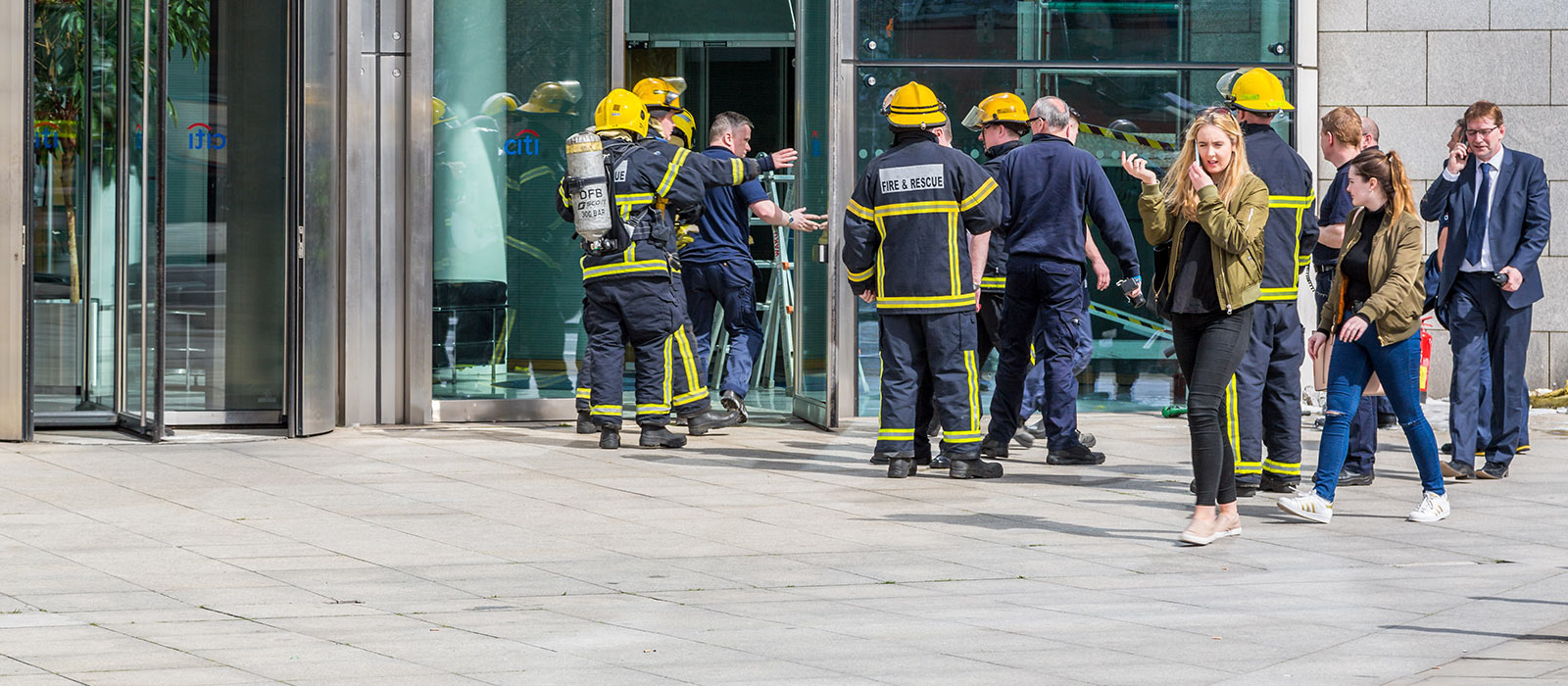To remove individuals from an endangered area in the event of an emergency that warrants evacuation.
IMMEDIATE ACTION

EVACUATE
PREPARE NOW
SEE SOMETHING, SAY SOMETHING. Let an authority know right away. Call Campus Safety Services at 613-520-4444 or extension 4444 from a Carleton landline.
KNOW THE SAFE DESTINATION SITE (INSIDE ANOTHER BUILDING OR OUTSIDE LOCATION). Identify your building evacuation safe destination site.
KNOW THE EXITS. Take time to identify the exits. For persons with disabilities, identify primary and alternate routes and exits that are both safe and accessible. Check to see if the building you are in is connected to any other nearby buildings, as these can also provide alternate means to evacuate to ground level should you be located on a building connection level.
PLAN YOUR EXIT. Plan how you will evacuate and anticipate where you may go. In addition to identifying safe destination sites, identify alternate locations that are safe and accessible should you need to evacuate from your primary location. It is important to remember in the case of some emergencies, like a fire, elevators are not operational. If you rely on elevators, develop a backup plan and register for Persons Requesting Assistance Self-Identification.
HAVE A SYSTEM. Have a “buddy” system with a friend or colleague. A buddy may be able to help or contact emergency personnel should you require additional evacuation assistance. Plan in advance with your buddy and those around you so they know what you would need during an emergency and how they can help you.
ALERT OTHERS AS YOU LEAVE. Make everyone aware of the situation as you depart.
SURVIVE DURING
EXIT. Immediately exit the building using the nearest safe exit and go to your building’s Safe Destination Site if it is safe to do so.
CHECK IN. Let leadership know that you are safe.
BE SAFE AFTER
HELP FIRST RESPONDERS. Provide information if you saw something critical. Remain calm and follow instructions.
SEEK HELP TO COPE WITH TRAUMA. Consider seeking professional help to cope with the long-term effects of trauma.
